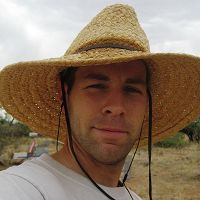Breshears et al., 2013
Consequences in Change in Vegetation Cover for the Critical Zone: Example Implications for Hydropedology (Invited)
Breshears D.D., Archer S.R., Bojóquerez Ochoa M., Field J.P., Huxman T.E., Law D.J., Logie C., Reynoso E.D., Villegas J.C., Whicker J.J. (2013)
Abstract H32D-01 presented at 2013 Fall Meeting, AGU, San Francisco, CA, 9-13 Dec.
-
Catalina-Jemez, INVESTIGATOR
-
Catalina-Jemez, INVESTIGATOR
-
Catalina-Jemez, INVESTIGATOR, COLLABORATOR
Abstract
Science in the Critical Zone is driven in large part by the interface between soil science and hydrology, with ecological processes and patterns often playing an intermediary role. Drawing on recent and ongoing studies in dryland ecosystems, we highlight example areas where changes in vegetation cover influence Critical Zone processes in terms of hydropedology. Changes in vegetation cover can occur spatially such as along climatic, elevation and/or land use gradients, and temporally, such as in response to fire and drought. Although the consequences of such changes in vegetation cover on Critical Zone processes often remain uncertain, important areas of inquiry include factors such as assessment of changes in microclimate and potential evaporation near the ground surface, which influence Critical Zone processes ranging from the partitioning of evapotranspiration to the transport and redistribution of sediment to litter, a driver of dryland decomposition. The impacts of these processes on the Critical Zone can also translate into Critical Zone goods and services, analogous to ecosystem goods and services that have been studied over the recent past.
Citation
Breshears D.D., Archer S.R., Bojóquerez Ochoa M., Field J.P., Huxman T.E., Law D.J., Logie C., Reynoso E.D., Villegas J.C., Whicker J.J. (2013): Consequences in Change in Vegetation Cover for the Critical Zone: Example Implications for Hydropedology (Invited). Abstract H32D-01 presented at 2013 Fall Meeting, AGU, San Francisco, CA, 9-13 Dec..
 This Paper/Book acknowledges NSF CZO grant support.
This Paper/Book acknowledges NSF CZO grant support.
Explore Further



